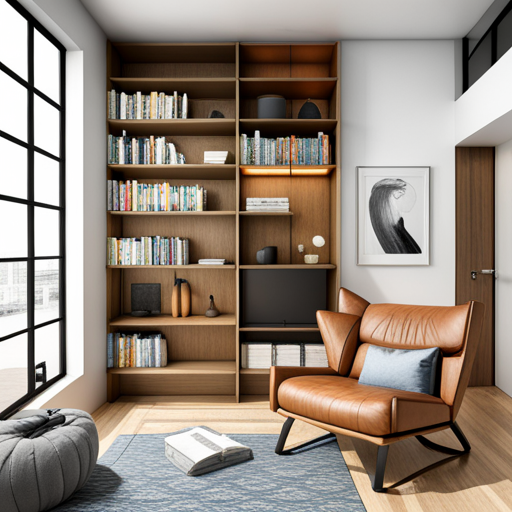Table of Contents
Optimizing and organizing storage solutions is essential for maximizing space and enhancing the functionality of any area. This article presents practical strategies and tips for efficiently utilizing storage in various environments.
1. Declutter and Assess: The First Steps to Effective Storage
Creating an effective storage system begins with decluttering and assessing your belongings. Decluttering involves going through your items and deciding what to keep, donate, or discard. This process helps to reduce unnecessary clutter, making it easier to organize what’s left. Start by tackling one area at a time, such as a single room or closet, to avoid feeling overwhelmed.
Categorize items into groups like clothing, books, kitchen utensils, or office supplies. Once you have a pile of keepers, assess how often you use each item and where it would be most convenient to store it. For example, everyday items should be easily accessible, while seasonal or rarely used items can be stored in less accessible areas. This initial step sets the foundation for a well-organized space, ensuring that only necessary and cherished items occupy your storage areas.
2. Smart Solutions for Small Spaces
Maximizing storage in small spaces requires creative and smart solutions. Think vertically by using wall-mounted shelves, hooks, and pegboards to keep belongings off the floor. Under-bed storage boxes or risers can also provide additional space for items like shoes, linens, or seasonal clothing. Multipurpose furniture, such as ottomans with built-in storage, can serve dual functions while keeping items hidden yet accessible. Use clear bins or labeled containers to store smaller items, making it easier to find what you need without creating a mess. Compact, stackable furniture can also save space and offer the flexibility to adapt to changes in your environment. Moreover, foldable furniture, like tables and chairs, can be stored away when not in use, freeing up valuable floor space. By implementing these smart storage solutions, you can make even the smallest space functional and well-organized.
3. Kitchen Storage: Maximizing Efficiency and Accessibility
The kitchen often serves as the heart of the home, but it can quickly become cluttered without proper storage solutions. Start by organizing your pantry with clear containers and labels, making it easy to find ingredients and keep track of stock. Install pull-out shelves or baskets inside cabinets to maximize space and accessibility. Use a lazy Susan to store spices, oils, and condiments in a corner cabinet, making them easily reachable without rummaging. Magnetic strips mounted on walls or inside cabinet doors can hold knives, scissors, or metal utensils, freeing up drawer space. Consider using hanging racks or pot rails to store cookware, keeping them within arm’s reach while saving cabinet space. Drawer organizers can help keep utensils and gadgets sorted and easy to find. Additionally, if you have limited counter space, use vertical storage solutions like tiered shelves or wall-mounted racks to keep frequently used items handy without cluttering the workspace. Efficient kitchen storage solutions not only create an organized environment but also enhance cooking efficiency and enjoyment.
4. Bedroom Storage: Creating a Calm and Clutter-Free Sanctuary
A well-organized bedroom contributes to a serene and restful atmosphere. Start by optimizing closet space with adjustable shelves, hanging organizers, and drawer dividers to separate clothing, accessories, and shoes. Consider using under-bed storage for items like off-season clothing, extra bedding, or shoes. Bedside tables with drawers or shelves can provide additional storage for books, electronics, and personal items. For small bedrooms, consider wall-mounted shelves or floating nightstands to save floor space. Use decorative boxes or baskets to store smaller items like jewelry, scarves, or mementos, keeping surfaces clear. Closet organizers, such as hanging shoe racks or stacked storage bins, can maximize space and help keep everything in order. Don’t forget about the back of doors; install hooks or over-the-door organizers for additional storage options. A clutter-free bedroom not only fosters a peaceful environment but also makes it easier to find what you need, contributing to a more relaxed and restful space.
5. Home Office Storage: Enhancing Productivity and Organization
An organized home office boosts productivity and reduces stress. Start by decluttering your workspace, keeping only essential items like your computer, stationery, and documents within reach. Use filing cabinets or portable file boxes to store important papers, ensuring they are categorized and easily accessible. Desk organizers, such as trays, drawers, and utensil holders, can help keep your workspace tidy and clutter-free. Consider using shelves above your desk to store books, reference materials, or decorative items that inspire you. Cable management solutions, such as cable clips or cord covers, can keep wires tangle-free and organized. If space allows, a rolling cart can provide additional storage for office supplies, allowing you to move it around as needed. Label your storage containers or drawers to quickly locate items and maintain order. By implementing effective storage solutions, your home office can become a functional and organized space conducive to concentration and efficiency.
• Conclusion
Mastering storage solutions involves a strategic approach tailored to each specific space in your home. By starting with decluttering and assessing your belongings, you create a solid foundation for effective organization. Employing smart storage solutions in small spaces ensures that every inch is utilized efficiently, while optimized kitchen storage not only organizes ingredients and tools but also enhances the cooking process. A well-organized bedroom fosters a serene and restful atmosphere, essential for relaxation. Finally, an efficient home office setup can significantly boost productivity and reduce stress. The key to optimizing and organizing storage is to tailor solutions to your unique needs, continuously assessing and adjusting your strategies to maintain order and functionality. With thoughtful planning and implementation, every space in your home can be transformed into an organized, efficient, and harmonious environment, making daily tasks more manageable and your home more enjoyable.



